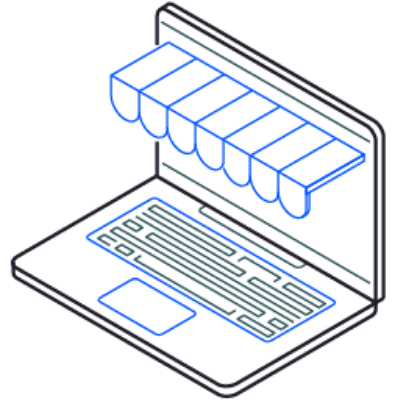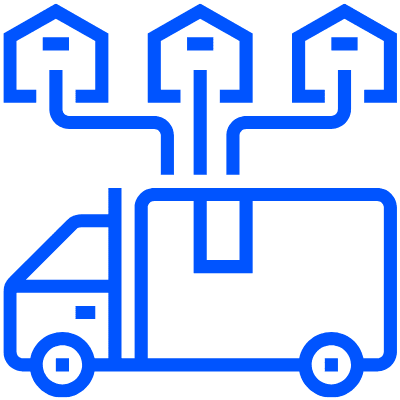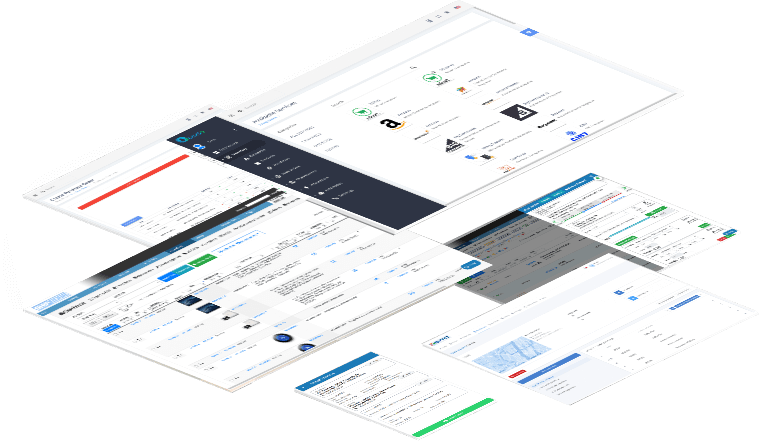Empowering commerce teams to leverage Omnichannel Order Fulfillment
The advent of online shopping has created new challenges for brands and retailers alike. With customers buying products from many channels, the challenge of order fulfillment has increased. But with the right strategy, brands and retailers can manage omnichannel order fulfillment with ease.

Omnichannel Order Management Core Concepts
Manage your entire Omnichannel Process from a centralized platform.

Channel Integration
We integrate with 75+ selling channels in the form of marketplaces, shopping carts, and various selling tools.

Order Management
It’s quick and easy to centralize all your order streams in our order management system (OMS) for order management across channels.

Inventory Availability
Protect your customer experience by ensuring you have accurate stock levels for sale online by integrating your warehouses (WMS), 3PLs, or other inventory locations.

Order Routing
Reduce logistics costs by routing orders based on proximity to the customer and inventory availability at connected inventory locations.

What is included in an omnichannel fulfillment strategy?
omnichannel order fulfillment strategy takes into account all of the channels your business uses to sell to customers. If not properly implemented, this strategy can lead to confusion, inefficiency, and frustration.
Omnichannel order fulfillment is the process of fulfilling an order across multiple channels. This can include a physical store, an e-commerce store, a mobile app, or a call center.
While this may seem like a straightforward process, it can be complicated. In order to be successful, these channels must work together and act cohesively as a part of a broader central strategy.
Components of a great omnichannel strategy

Channel Connectivity & Integration
Title

Centralized Order Management

Flexible Fulfillment Network

Catalog Management and SKU Translation

Global Logistics Partners on Demand

Data Connectivity with other Software

Send Supplier Stock to Warehouses

Measure Channel Health with Reporting

simplify and centralize inventory management
Inventory management and reporting across inventory locations plays an important role in the omnichannel commerce process. The more accurately you can measure sellable inventory and manage it across facilities the better your customer experience will be. You can quickly deploy our WMS across facilities and deploy a network in weeks.

Optimize omnichannel fulfillment operations
Integrating your channels is the best way to ensure you have the ability to manage orders from a centralized place. We can help you automate repetitive order management tasks and give you helpful insights to increase revenue. Easily conquer long tail eCommerce requirements and consolidate your commerce software stack.

Improve Shipping speed & accuracy
It is more important than ever to offer fast shipping options to drive positive customer experience and drive repeat business. We also help your drive down the overall cost of shipping. Leverage our intelligent rate shopping features, cartonization, and discounted rate programs to stay competitive in today’s customer-centric commerce world.
How can brands and retailers manage commerce in the age of omnichannel order fulfillment?
Omnichannel order fulfillment is becoming more and more ubiquitous as more and more customers interact with brands and retailers solely through digital channels. It is important for retailers to manage their order fulfillment process to make sure that customers are receiving the product they ordered in the way they expect.
What is order fulfillment?
Order fulfillment is the process of getting products that were purchased online to your customers.
During the order fulfillment process the products are picked, packed, quality checked, and shipped to the customer all within the estimated shipping timeframe that you originally gave during checkout.
It’s important that a company has clear processes and a good understanding of how to meet customer expectations during the order fulfillment process. This includes:
- Reporting the correct amount of inventory is available online for sale from your order management system so logistics team members aren’t scrambling to fulfill orders you may not actually have stock for.
- Picking the correct products for each order in an efficient but error-free manner to ensure on-time delivery.
- Packing the correct products into the correct order and using optimally sized packaging to prevent high shipping costs or delays.
- Shipping the order using the most cost-effective shipping method that matches the expected delivery date of the customer’s order.
How does order fulfillment work?
When a consumer buys something online or through an offline sales channel that isn’t brick and mortar retail, you will need to have a logistics process in place to get ordered products to that consumer. This is called order fulfillment.
After the order is placed there needs to be a place to store order information such as who the consumer is, their address, what products they ordered, when they expect to receive those products, how much they paid for the items in the order, etc.. This can be done in an order management system.
That order management system should then send the order to a logistics facility or facilities, like a fulfillment center, that can complete the different steps that are necessary to fulfill the order.
Some common steps in the fulfillment process are;
- Picking the relevant products that need to be shipped to your consumer.
- Packing those products in an efficient manner to prevent product damage and delays.
- Shipping the order using a parcel carrier (ex. USPS, UPS, FedEx, or DHL), freight logistics company (LTL, FTL), or your own last-mile delivery service (managed fleet).
How can you improve the order fulfillment process?
Order fulfillment at a basic level includes processes related to the picking, packing, and shipping of orders placed through an online or offline sales channel.
It can be easy to get started with order fulfillment. However, mastering the process and driving efficiency in order fulfillment is typically an ongoing process.
Some of the goals you can set to improve your order fulfillment process are;
- Have great warehouse organization, so it’s easy to locate products during the fulfillment process. You can do this by running a WMS or warehouse management system.
- Increase picks per hour by using a combination of different pick styles and wave patterns. You may want to get started with batch picking, pick to cart, discrete picks for larger orders, and other common pick workflows.
- Reducing errors during the fulfillment process. You can do this during the picking and packing phases by implementing a QC or quality check process to make sure the correct items are going out to your customers. Systems like our WMS have these scan-based checks built into a mobile app for your warehouse team to use.
- Reduce shipping costs and use the correct methods to get orders shipped out to your customers by or before their delivery estimate. Automated rate shopping and shipping rules software will help you do this pretty easily. We have one built-in which makes your shipping workflow smoother.
Some more advanced options include forecasting demand to ensure high stock availability, automating repetitive tasks like box selection or shipping label selection, creating special high flow areas or adding refillable pick faces managed by software, and integrating machine handling or packaging robotics.
Find out if we’re a good fit
Our comprehensive commerce operations platform can offer many advantages and reduce tech stack creep by offering a one stop shop for all of your omnichannel order fulfillment needs.
Book a Free Consultation with a Solutions Engineer

Check our open calendar after you hit submit to find a time that works for your team.
Every organization is different, so a solutions engineer will work with you to identify your biggest challenges and the best possible solutions to overcome those challenges.

Publications
Resources
Glossary / Common Industry Terms
Here is a glossary of industry terms that are commonly used when talking about omnichannel order fulfillment. To find more terms please check out our other pages or take a look at our centralized glossary of terms.
Order Fulfillment
Order fulfillment is the process of taking stock that was promised to a customer and picking, packing, and shipping that product to the customer who ordered it from you.
Fulfilled Order
We would define fulfilled orders as an order that has been shipped or is in the process of being shipped to your customer. At this point product has left your warehouse.
eCommerce Integration
eCommerce integration is the process of integrating or connecting many selling channels, fulfillment centers, and marketing tools to manage online commerce.
Inventory Syncing
As omnichannel selling happens across many shopping carts and marketplaces, maintaining accurate sellable inventory happens through stock syncs by API.
Fulfillment Network
A fulfillment network is an interlinked network of all the fulfillment assets, warehouses owned / operated by you or by a third party, that store and ship your products to your customers.
Order Routing
Order routing is the logistics process of sending an order or parts of an order to the optimal inventory location to efficiently and cost-effectively fulfill a customer’s order.






